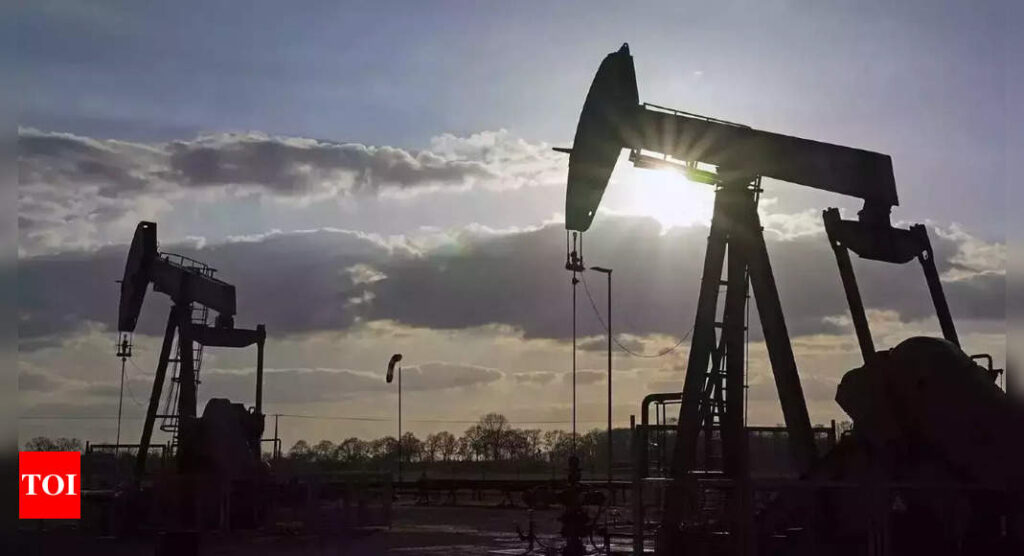[ad_1]
Russia‘s share in India’s crude oil imports dipped to 34% in August, down from July’s 42%, following substantial reductions by state-run refiners, states an ET report. In August, Russia’s supplies decreased by 23% compared to the previous month, reaching 1.47 million barrels per day (mbd). Concurrently, India’s overall crude imports experienced a 5% decline to 4.35 mbd, as reported by energy cargo tracker Vortexa. Notably, Russia’s seaborne crude exports to China rose from 1.3 mbd in July to 1.4 mbd in August.
Indian state refiners got 852,000 barrels per day of Russian oil in August, which marks a 30% dip compared to July. Meanwhile, private sector refiners have also reduced their intake to 617,000 barrels per day, which is a 13% drop from July figures.
Analysts attribute the decline in Russian imports to planned maintenance work at Indian refineries and a decreased availability of Russian supplies. Serena Huang, an analyst at Vortexa, noted that there is no immediate indication of a Russian crude export rebound, suggesting India’s imports will likely remain subdued.
Russia’s reduced exports stem from its focus on cutting crude production and meeting domestic fuel demands, according to an industry executive. Saudi Arabia has emerged as the main beneficiary from the drop in Russian crude oil supplies. It has increased its exports to Indian refiners to 820,000 barrels per day in August, a 70% surge from July.
Consequently, Saudi Arabia’s share in India’s crude market rose to 19% in August from 11% in July. The shares of other top suppliers remained largely unchanged, with Iraq at 20%, the UAE at 6%, and the US at 5%.
Huang pointed out that, “Russian Urals discounts to dated Brent have narrowed in recent weeks as a result of lower supplies, which has likely dampened the appetite of Indian refiners as well.”
This decrease in appetite is consistent with the decline in Urals’ share among Russian supplies imported by India in August, which fell from 83% in July to 73%. The Urals had mostly traded below the G7-imposed price cap of $60 per barrel but has breached the cap in recent weeks. Currently, Urals trades around $69 per barrel, while the international benchmark Brent stands at approximately $88 per barrel.
Notably, Indian state refiners acquire Russian oil on a delivered-at-port basis, transferring transportation and insurance risks to suppliers, which become more significant when the oil exceeds the G7-imposed price cap of $60 per barrel.
Indian state refiners got 852,000 barrels per day of Russian oil in August, which marks a 30% dip compared to July. Meanwhile, private sector refiners have also reduced their intake to 617,000 barrels per day, which is a 13% drop from July figures.
Analysts attribute the decline in Russian imports to planned maintenance work at Indian refineries and a decreased availability of Russian supplies. Serena Huang, an analyst at Vortexa, noted that there is no immediate indication of a Russian crude export rebound, suggesting India’s imports will likely remain subdued.
Russia’s reduced exports stem from its focus on cutting crude production and meeting domestic fuel demands, according to an industry executive. Saudi Arabia has emerged as the main beneficiary from the drop in Russian crude oil supplies. It has increased its exports to Indian refiners to 820,000 barrels per day in August, a 70% surge from July.
Consequently, Saudi Arabia’s share in India’s crude market rose to 19% in August from 11% in July. The shares of other top suppliers remained largely unchanged, with Iraq at 20%, the UAE at 6%, and the US at 5%.
Huang pointed out that, “Russian Urals discounts to dated Brent have narrowed in recent weeks as a result of lower supplies, which has likely dampened the appetite of Indian refiners as well.”
This decrease in appetite is consistent with the decline in Urals’ share among Russian supplies imported by India in August, which fell from 83% in July to 73%. The Urals had mostly traded below the G7-imposed price cap of $60 per barrel but has breached the cap in recent weeks. Currently, Urals trades around $69 per barrel, while the international benchmark Brent stands at approximately $88 per barrel.
Notably, Indian state refiners acquire Russian oil on a delivered-at-port basis, transferring transportation and insurance risks to suppliers, which become more significant when the oil exceeds the G7-imposed price cap of $60 per barrel.
[ad_2]
Source link











More Stories
India’S Growth Forecast: S&P ups India’s FY’24 growth forecast to 6.4% on robust domestic momentum
India to remain fastest-growing major economy, but demand uneven: Poll
Jack Ma: Jack Ma gets back into business with ‘Ma’s Kitchen Food’